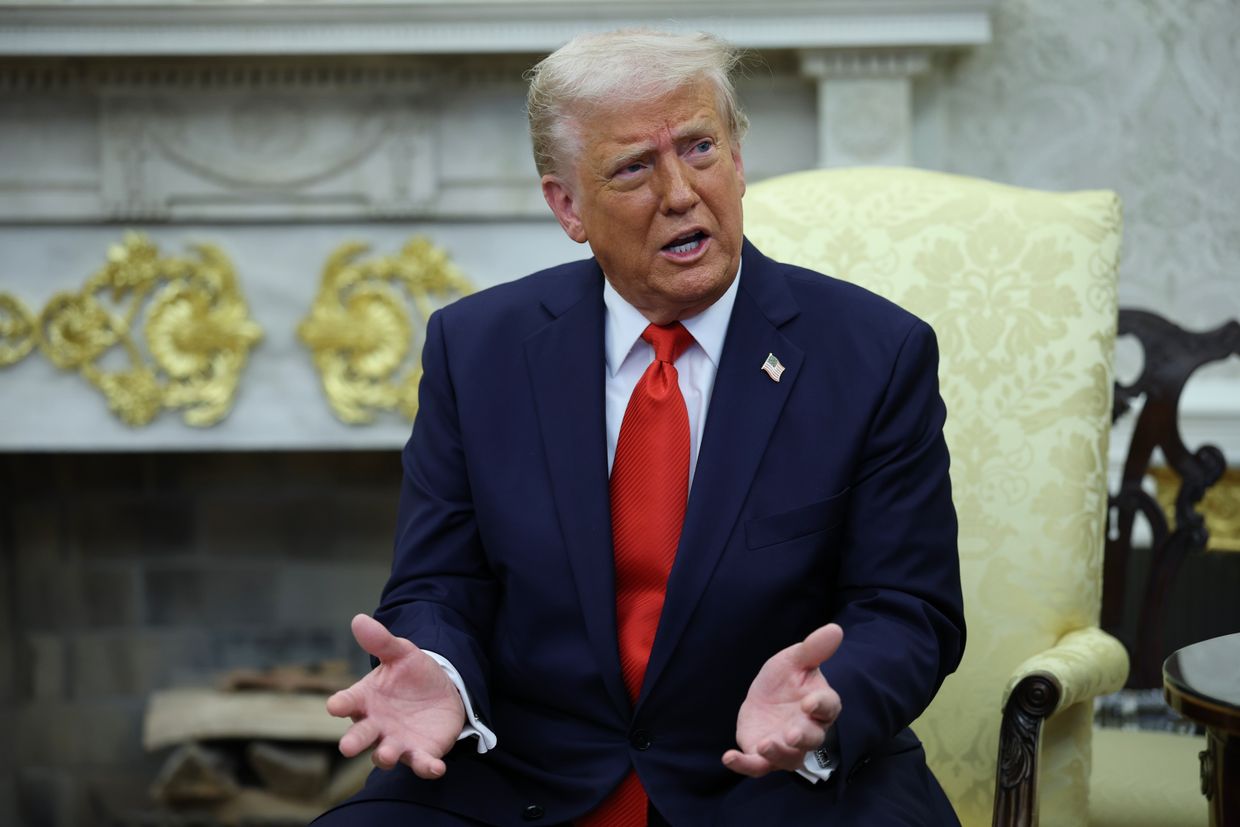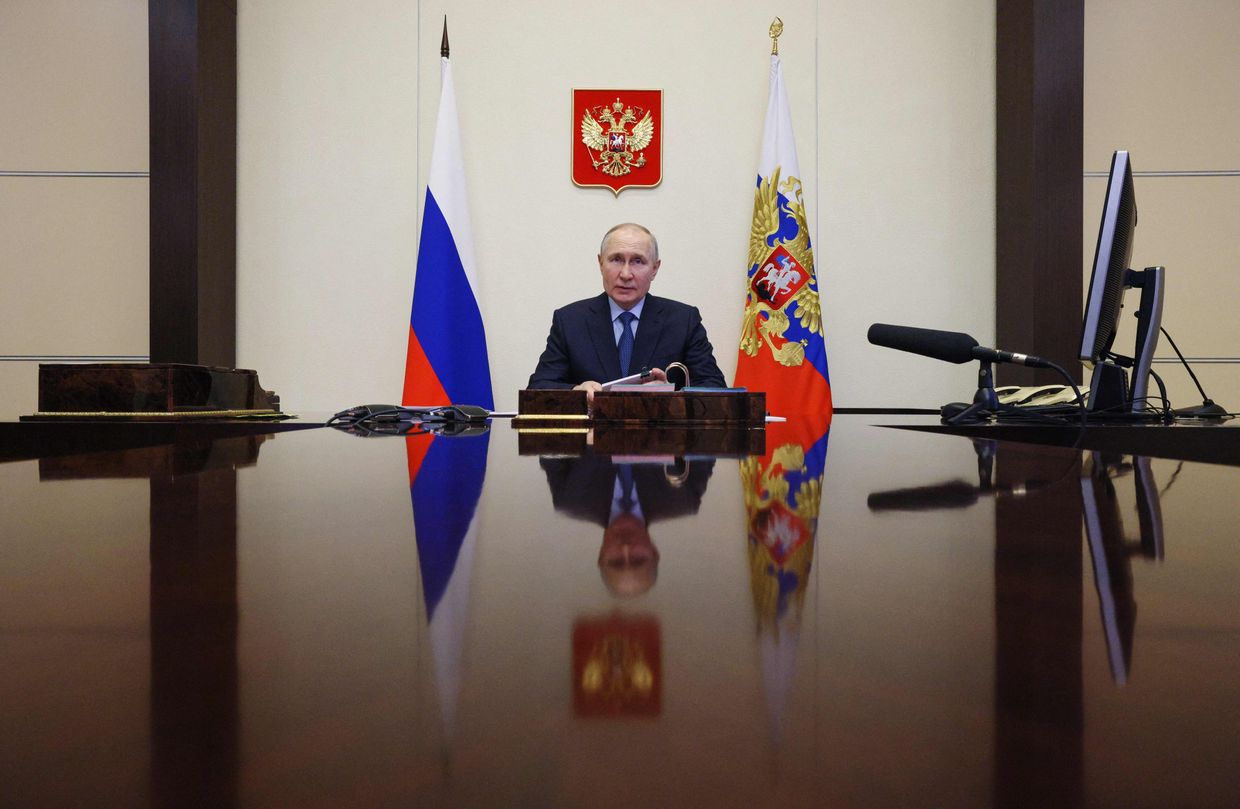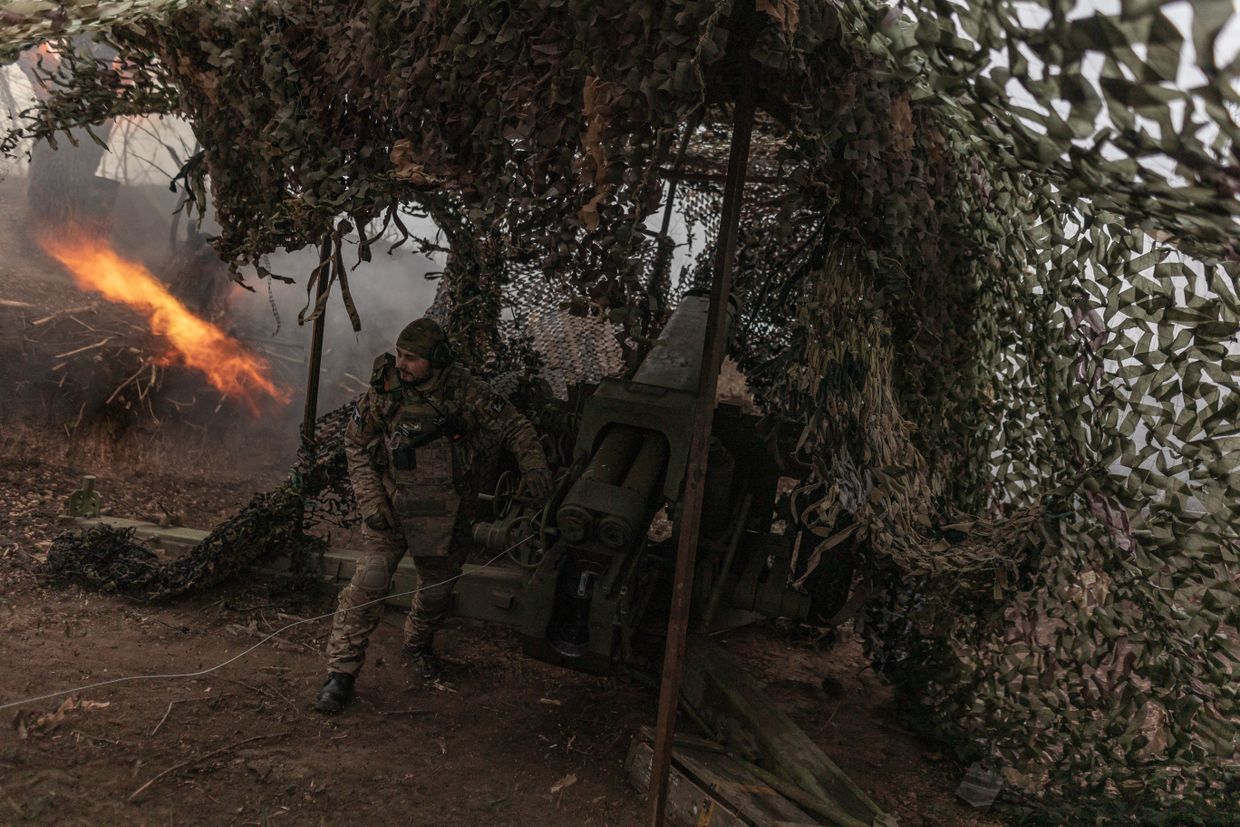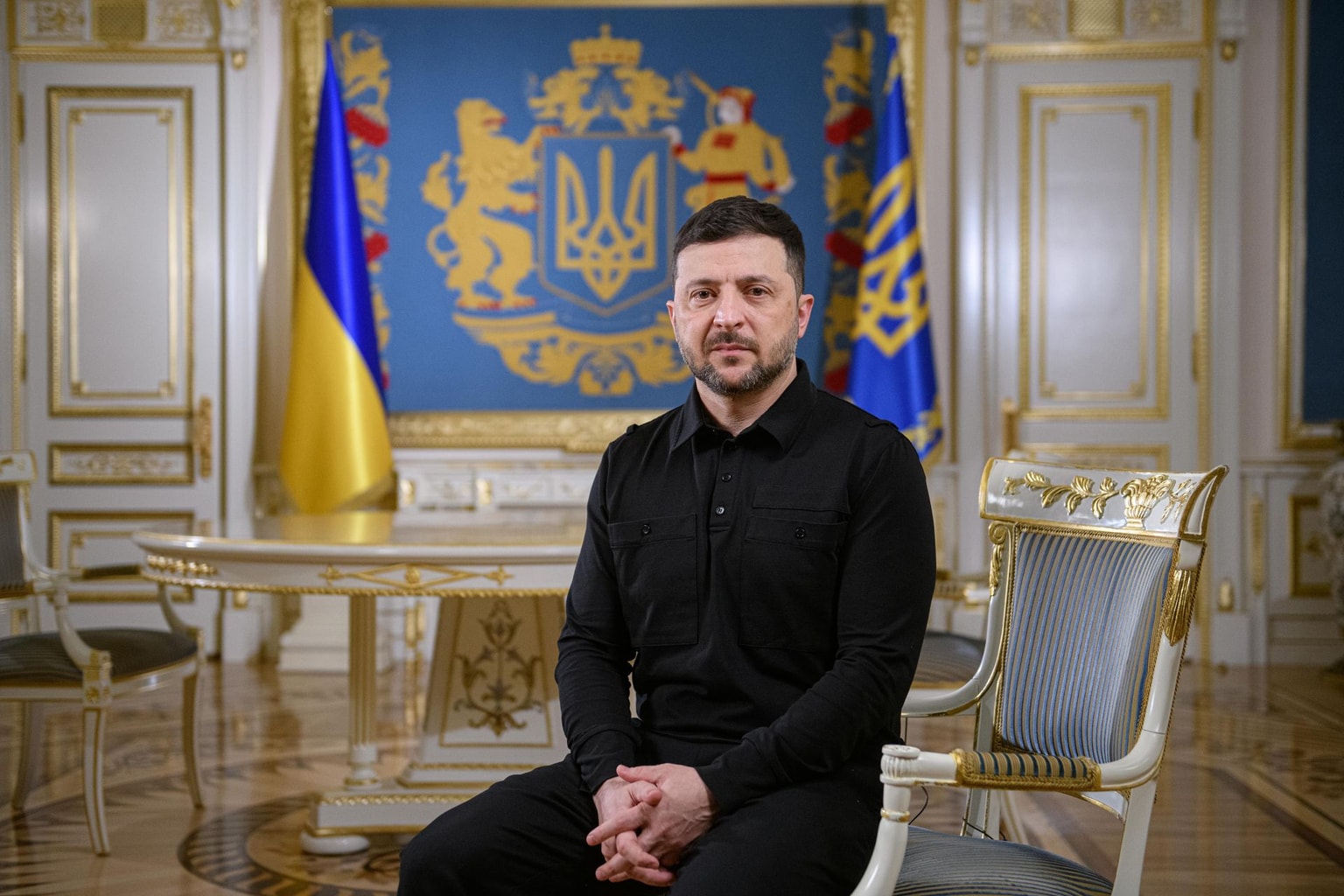
As Trump mulls cuts, NATO's integrity is on the line
U.S. President Donald Trump in Washington, D.C., on April 17, 2025. (Win McNamee / Getty Images)
With the start of Donald Trump's second term in office, NATO finds itself on shaky ground — reports that the U.S. president might cut the alliance's funding do little to ease fears.
A leaked White House memo revealed plans to slash the U.S. State Department funding for the next fiscal year in half, with almost no money allocated for the common NATO budget.
The cuts would come as the alliance faces its most dire security challenge since the Cold War, as Russia wages an all-out war against Ukraine and slowly sets its sights on NATO members.
The move would also underscore Trump's disregard for transatlantic security, which is already challenged by reported plans to withdraw some U.S. troops from Europe and relinquish leadership of European allied command.
But not all is said and done. The U.S. State Department pushed back against the reports on funding cuts, implying that the memo was a "suggestion" and reaffirming its commitment to the alliance.
Furthermore, the State Department does not carry the U.S. costs for NATO's common budgets on its own, sharing the responsibility with the Defense Department.
Nor should one fall under the Trump-induced illusion that the U.S. pays for most of NATO's operations — Washington pays for roughly one-sixth of NATO's budgets, making it conceivable that other members can plug the whole.
How is NATO funded — and what share does US really pay
Trump has caused some confusion about the scope of the U.S. contribution to NATO's budget. He once went as far as to claim that the U.S. covers 80% of the alliance's funding, a wild overstatement that resembles his false statements on the aid sent to Ukraine.
The U.S. president has often accused allies of taking advantage of the U.S.'s defense spending, presenting their lack of contributions as a "debt" owed to Washington.
While it is true that the U.S. overspends other NATO allies by a significant margin — representing two-thirds of the alliance's overall defense spending — this has no relation to direct funding of NATO's budgets.

The alliance's day-to-day operations are funded through direct and indirect contributions by its members, calculated by their gross national income (GNI). Around $5.2 billion has been allocated for this year's common budget, only about 0.3% of the total allied defense spending.
"Every member contributes to this common funding pool based on the size of their economy," said James Goldgeier, professor at the School of International Service at American University.
"This money is separate from the funding each country provides for their own defense spending, which is what we usually focus on," the researcher told the Kyiv Independent.
The U.S. and Germany shoulder the greatest portion of NATO's common budget — roughly 16% each, or about $830 million in 2025. They are followed by the U.K. with 11% and France with 10%, while the other members' contributions are counted in single digits or even below 1%.
The funding is divided among three budgets. The $550 million civilian budget, which funds NATO Headquarters operations, consultations, and related costs, appears to be the one threatened by Trump's planned State Department cuts.
The civilian budget is mostly supported by members' foreign ministries, while defense ministries foot the bill for the military budget, including missions, exercises, command structure operations, and more.
The NATO Security Investment Program (NSIP), an investment fund used mainly for the development of common facilities and installations, among others, is also funded via national defense budgets.
The Pentagon has not escaped the wide-reaching budget cuts the Trump administration unleashed upon government agencies in the name of cost savings.

Defense Secretary Pete Hegseth has already taken the axe to supposed "Diversity, Equity, Inclusion" (DEI) projects, with even more cost-saving measures expected in the future.
To the public's knowledge, the Pentagon's NATO funding is not on the chopping block — yet.
Trump has made no secret about his dislike of NATO, often criticizing allies for insufficient defense spending.
It was also Trump who, in his first term, negotiated reduced U.S. contributions to the alliance's budgets. When he first took office in 2017, the U.S. covered 22% of NATO's operational costs.
European partners must be ready that the figure may continue to drop as Washington pivots away from the transatlantic alliance.
Warning signs for Europe
While non-U.S. NATO members would likely be able to sustain the budget without Washington's support, the cuts would signal much darker implications.
"The Europeans could fill the gap because these funds are not very large, but a U.S. pullback from this common funding would be yet another sign that this administration does not view NATO as a common endeavor of alliance members with a shared purpose," Goldgeier said.
In whatever shape the cuts may come, they could not happen at a worse moment. Russia shows no signs of relenting in its all-out war against Ukraine and is already issuing direct threats to NATO's eastern members.
The Trump administration is, in the meantime, expected to withdraw some 10,000 troops from the alliance's eastern flank, signaling that Europe is no longer its priority.
During his first official visit to NATO Headquarters on April 3, Secretary of State Marco Rubio — often seen as the "adult in the room" within Trump's team — sought to reassure the partners that the U.S. has no intention of leaving the alliance.
"President Trump has made clear he supports NATO. We're going to remain in NATO," Rubio said at a press briefing alongside NATO Secretary General Mark Rutte.
He has, nevertheless, repeated Trump's call to increase the NATO defense spending benchmark to 5% of GDP, a request in stark contrast to possible cuts to the common funding.

The more MAGA-aligned U.S. officials are less restrained. Elon Musk, the world's richest man who now holds unprecedented powers in Washington, openly supported an exit from NATO, and some hardline Republicans even submitted a bill to do just that.
In December 2023, then-Senator Rubio co-sponsored a bill that barred the president from unilaterally leaving the alliance without congressional approval. But even if Trump may find it difficult to leave NATO formally, some observers point out that his actions might still render the alliance de facto irrelevant.
The U.S. president has already directly challenged the alliance's most sacred cornerstone, the collective defense principle, by saying he would not defend those members who do not spend enough on their security.
"It's common sense, right," Trump said in the Oval Office in March. "If they don't pay, I'm not going to defend them. No, I'm not going to defend them."
The Europeans got the memo.
"The West as we knew it no longer exists," European Commission President Ursula von der Leyen said in April amid the increasingly strained relations between the two sides of the Atlantic.
Underscoring the changing times, Friedrich Merz, the soon-to-be German chancellor, and a devout Atlanticist, declared right upon his election victory that his goal was "to strengthen Europe as quickly as possible so that, step by step, we can really achieve independence from the U.S."













